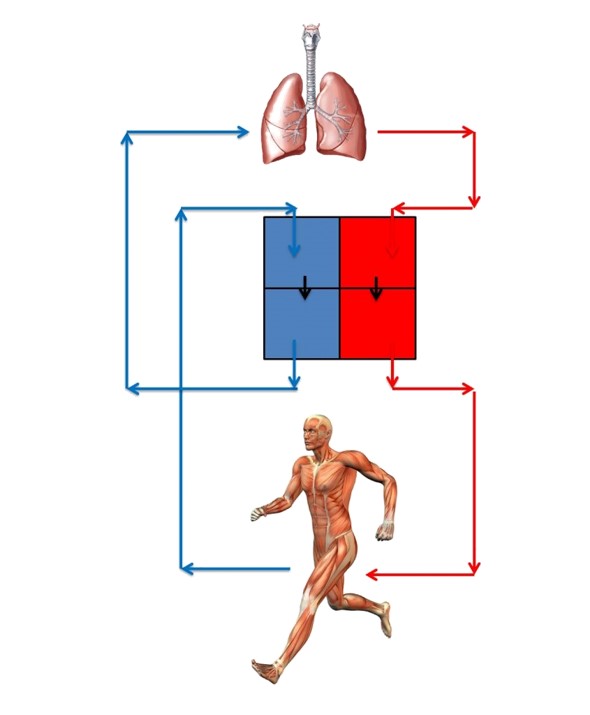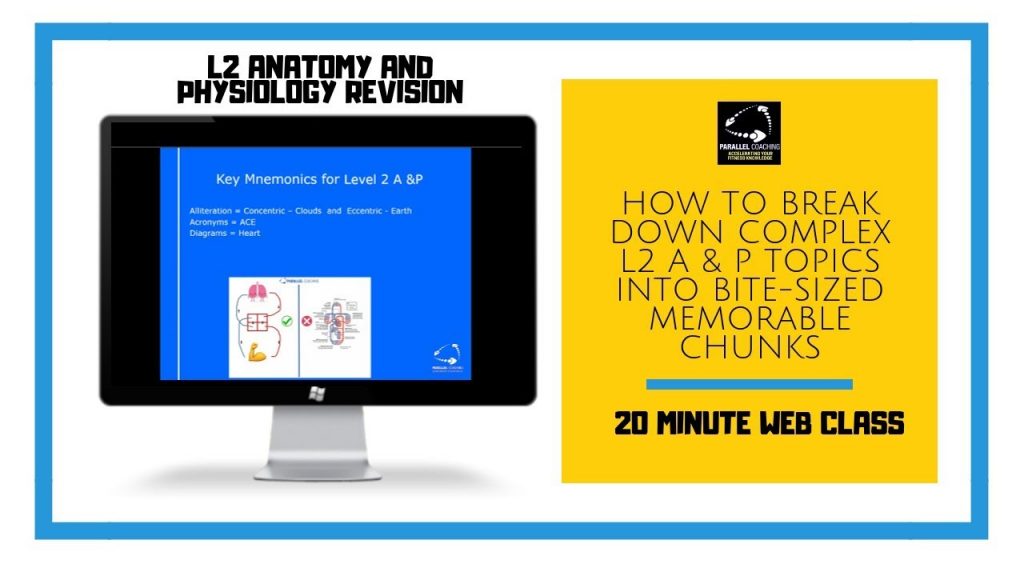In this webclass, we’ll teach you how to break down complex Level 2 Anatomy and Physiology topics into bite-sized memorable chunks…
I’m sure you’d agree, learning level 2 anatomy and physiology can be tough and has a fair few tricky and complex topics?
Agreed? In today’s web class I’m going to show you have you break down these complete anatomy and physiology topics into smaller chunks, meaning you can retain and recall the information at any point, especially on exam day. Said differently, in the next 20-mins I’ll show you how to learn and accelerate all your future revision sessions.
Here's the timestamps for the video above
Here's the timestamps for the video above
0:00 Intro
1:23 Why you should break it down?
2:55 The Formula to learning
4:33 Keeping it Simple
5:10 Key Mnemonics for Level 2 anatomy and physiology
10:44 Putting it into practice (5 steps to making a mnemonic)
12:36 Use our Mnemonics - The revision mastery Bootcamp for Level 2 anatomy and physiology
Key mnemonics for Level 2 Anatomy and Physiology Exam preparation:
We refer to a few specific mnemonics in this web class, these include:
Using alliteration:
Alliteration is a really easy method for remembering key facts, definitions and processes. For your Level 2 Anatomy and Physiology revision, you need to know about phases of a movement. There is both an eccentric and a concentric phase of every movement. Alliteration can help you remember that the Concentric (lifting phase) is when the load is going towards the Clouds and the Eccentric (lowering phase) is when the load is going towards the Earth.
Concentric =Clouds and Eccentric =Earth
Using acronyms:
Acronyms are a really flexible and creative way to remember processes. By remembering just one word (for example ACE) you can recall an entire process.
An example of an acronym is ACE. This can be used to remind you of the difference between afferent and efferent neurones as part of understanding the Nervous System.
Afferent neurones send signals from the sensory receptor to the Central Nervous System, and the Efferent neurone sends signals from the Central Nervous System to the Muscle we wish to move.
ACE = Afferent- Central Nervous System – Efferent
Diagrams:
Diagrams are great, especially if you keep them simple, and easy to replicate. Ideally, you want to use diagrams that you can easily draw on your brain dump on exam day. Keep the drawings so simple that a 5-year-old could draw them.
We use this simple diagram of the heart:

Analogies:
Analogies are a simple way for understanding the function and purpose of certain topics. This is best when you relate the new information to other things that you are familiar with. For example, if you are an engineer by trade, you may be familiar with pumps and engines, so relating the heart to the pump will help you understand this in greater detail.
Rhymes:
Rhymes are a great way to make learning more interesting. You can use complex rhymes that explain an entire topic and become more like a full-length song. Or you can use simple little rhymes like the one we use in this web class :
The VeIN is the way IN
Putting it into Practice:
You can build your own mnemonics using our 5 step sequence (in the video). However, this can take time, energy and creativity that you may not have right now.
Instead, you can use ours…
We have designed dozens of mnemonics as part of our Level 2 Anatomy and Physiology Revision Mastery Bootcamp. They are all mapped to major awarding body syllabi so you know that you are learning topics that will come up in your exam. The mnemonics are easy to learn and remember and above all can save you hours of revision time.
You can access all of the Revision Mastery Series plus exclusive bonuses by clicking the link below:
https://parallelcoachingacademy.com/L2-anatomy
Dedicated to your learning,
Hayley
Parallel Coaching
You can also find us on the following platforms:
Instagram: https://www.instagram.com/parallelcoaching
Facebook: https://www.facebook.com/ParallelCoaching
Twitter: https://twitter.com/ParallelCoach
YouTube Channel: http://bit.ly/2F1Z1bs

